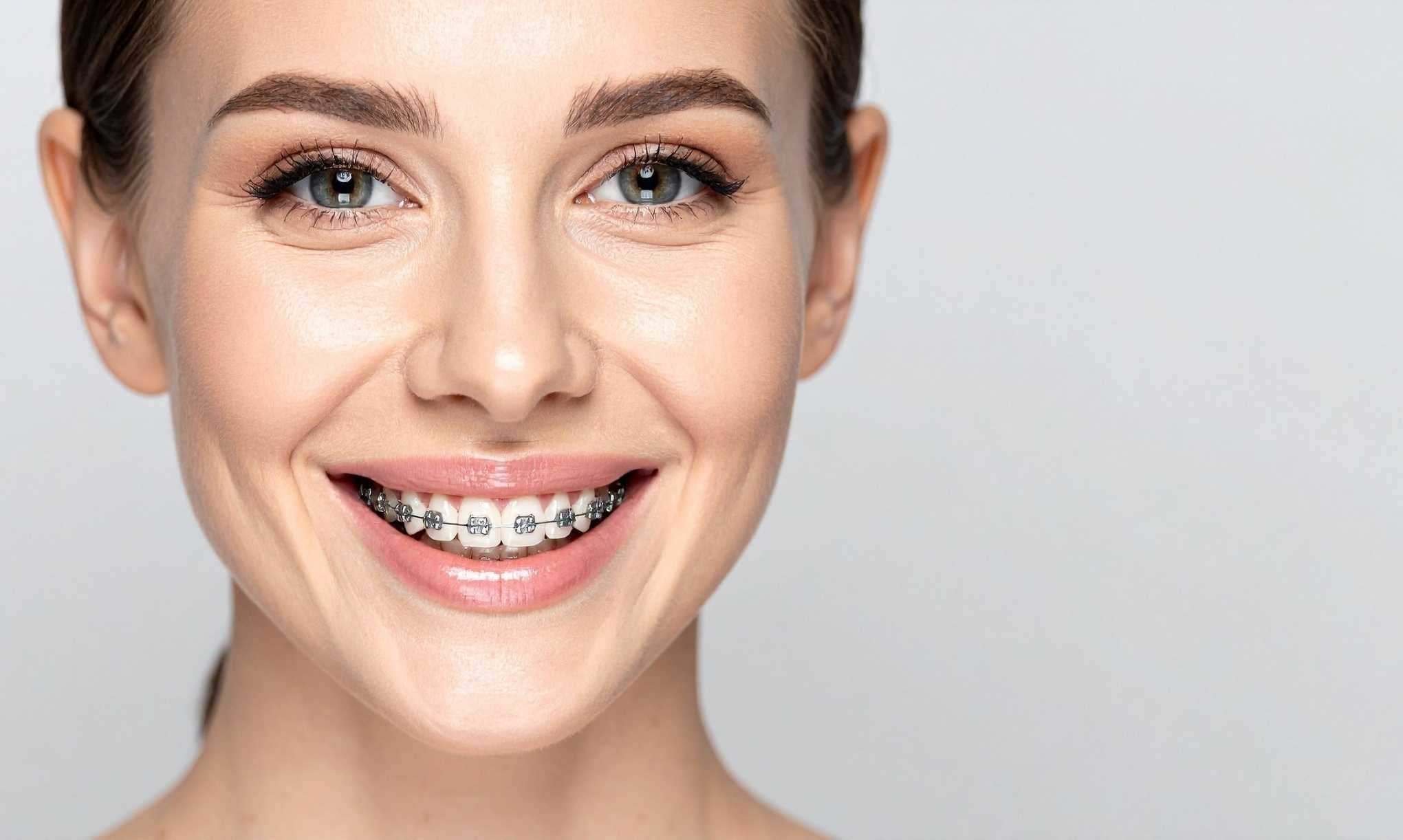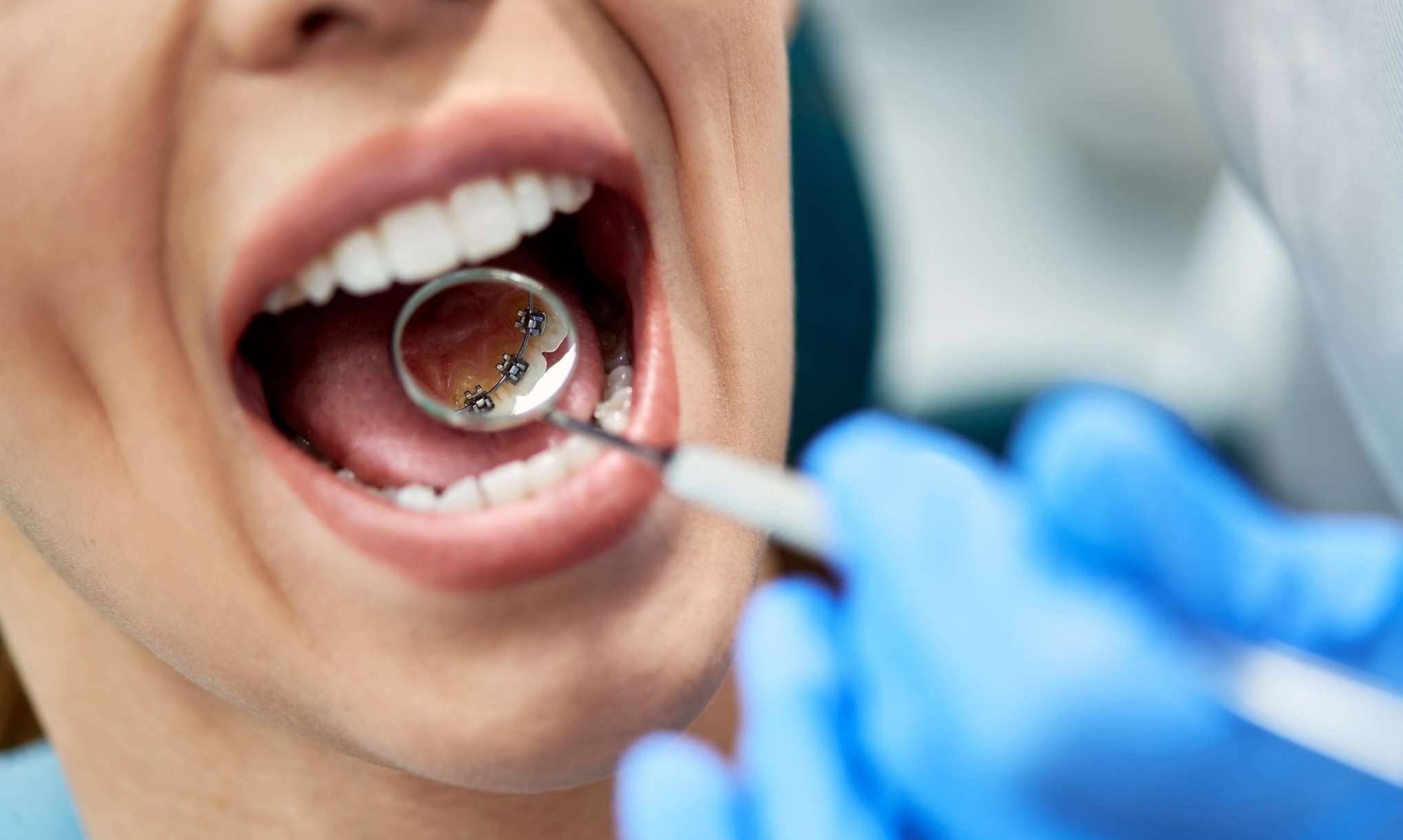Expert tips for a smoother orthodontic journey

By Kath Wong | October 20th, 2025
Getting braces is a big step — one that not only transforms your smile but also your daily life. Whether you’re an adult finally starting orthodontic treatment or a teenager adjusting to the change, the journey can feel exciting yet slightly intimidating.
Have you ever wondered what your first meal with braces will be like? Or if speaking will feel different? The truth is, life with braces requires some adjustment — but with the right guidance, patience, and care, you can enjoy the process while looking forward to your confident new smile.
This guide explores how to comfortably eat, speak, and smile with braces, along with helpful tips for keeping your treatment smooth and stress-free.
Understanding The Braces Journey
Before diving into the practical tips, it’s important to understand what braces actually do. Braces use gentle, continuous pressure to move your teeth into the ideal position over time. This process can last anywhere from 12 to 36 months, depending on your individual case.
The common types of braces include:
· Traditional metal braces: Most common and highly effective for complex cases.
· Ceramic braces: Tooth-coloured and less visible than metal.
· Lingual braces: Attached behind the teeth for a discreet look.
· Clear aligners: A removable and nearly invisible option for minor to moderate alignment issues.
Each type has its pros and cons, but all require lifestyle adjustments — especially during eating, speaking, and smiling. Many orthodontic clinics listed on Trambellir offer consultations to help you decide which option best fits your lifestyle and goals.
Eating With Braces: Smart Choices For A Comfortable Mouth
The first few days after getting braces are often the most challenging. Your teeth and gums might feel tender as they adjust to the pressure. Choosing the right foods during this period can help ease discomfort and prevent damage to your braces.
What To Eat:
· Soft foods like mashed potatoes, soups, yogurt, scrambled eggs, and smoothies.
· Cooked vegetables and soft fruits such as bananas, berries, and avocados.
· Protein options like fish, tofu, and tender chicken.
What To Avoid:
· Hard or crunchy foods like nuts, popcorn, and chips — they can bend wires or break brackets.
· Sticky sweets like caramel and chewing gum, which easily get caught in braces.
· Chewy foods like bagels or hard rolls that strain the brackets.
According to the American Association of Orthodontists, avoiding hard and sticky foods reduces the risk of emergency visits by more than 60%.
Pro tip: Cut food into smaller, bite-sized pieces and chew slowly. This not only protects your braces but also reduces discomfort while eating.

Speaking Clearly While Wearing Braces
It’s common to feel self-conscious about your speech after getting braces. You may notice a slight lisp or find it harder to pronounce certain words. Don’t worry — your tongue and mouth just need time to adjust.
Tips For Clearer Speech:
1. Practice out loud: Read books, sing songs, or recite tongue twisters to improve clarity.
2. Slow down: Speaking slowly helps your tongue adapt to the new positioning of your teeth.
3. Stay hydrated: A dry mouth can make speaking more difficult, especially with metal braces.
4. Wax for comfort: Use orthodontic wax on areas that irritate your cheeks or lips.
Most patients find that within a few weeks, their speech returns to normal — and sometimes even clearer than before!
For those considering lingual braces (placed behind the teeth), speech adaptation might take slightly longer, but the discretion they offer often makes it worth it. Trambellir’s partner clinics can guide you through what to expect from different brace types before starting treatment.
Smiling With Braces: Confidence Is The Real Glow
A new set of braces may make you hesitant to smile at first — but remember, braces are a sign of transformation and self-care. They’re part of your journey to a better smile, not something to hide.
Confidence-Boosting Tips:
· Practice smiling in the mirror: This helps you get used to your new look.
· Maintain oral hygiene: Clean braces sparkle and enhance your appearance.
· Focus on posture: A confident stance amplifies your smile’s charm.
· Accessorize smartly: Neutral lip colors or glossy balms can make your smile look bright and natural.
Interestingly, a 2020 survey by Align Technology found that people who wore orthodontic braces felt a long-term increase in confidence post-treatment — citing improved self-esteem and professional growth.
So, wear your braces with pride. Each bracket is a small step toward the beautiful, aligned smile you deserve.

Oral Hygiene: The Secret To A Smooth Braces Experience
Keeping your teeth and braces clean is crucial to avoid cavities, stains, and gum issues. Because food particles can easily get stuck between wires and brackets, proper cleaning takes a bit more effort — but it’s worth it.
Daily Care Routine:
· Brush after every meal with a soft-bristle toothbrush and fluoride toothpaste.
· Use an interdental brush or water flosser to clean between brackets.
· Rinse with mouthwash to kill bacteria and keep breath fresh.
· Regular dental checkups ensure early detection of any potential problems.
Professional orthodontic cleaning services — available through Trambellir’s partner clinics — can help keep your braces and gums in top shape throughout your treatment journey.
Handling Discomfort And Emergencies
Mild soreness or irritation is normal, especially after adjustments. However, certain issues require quick attention to prevent complications.
Common Issues And Quick Fixes:
· Loose bracket: Cover it with orthodontic wax and schedule a repair visit.
· Poking wire: Use a pencil eraser to gently push it back into place.
· Mouth sores: Rinse with warm salt water for relief.
· Persistent pain: Over-the-counter pain relievers can help, but consult your orthodontist if it continues.
Remember, discomfort means your braces are working — gently guiding your teeth toward perfect alignment.

Social Life And Eating Out
You don’t have to miss out on social events because of your braces. With a bit of planning, you can enjoy meals and gatherings stress-free.
Smart dining tips:
· Check the menu beforehand to find braces-friendly options.
· Carry a small dental kit (toothbrush, floss, wax) for quick cleanups.
· Skip hard or sticky desserts, but enjoy soft treats like cheesecake or mousse.
When you maintain confidence and care, braces won’t hold you back — they’ll simply become part of your smile story.
Looking Ahead: The Reward Of A Beautiful Smile
Life with braces may come with temporary inconveniences, but the reward is lasting. A straighter smile doesn’t just improve appearance; it enhances oral health, reduces jaw discomfort, and boosts self-esteem.
When your braces finally come off, you’ll realize every small adjustment, every skipped caramel, and every extra brushing session was worth it.
For those considering braces or exploring advanced orthodontic treatments, Trambellir connects you with certified dental specialists offering customized options, from traditional braces to clear aligners, across trusted clinics worldwide.
FAQs
Q1. How long will I need to wear braces?
Most people wear braces for 18 to 24 months, but the duration depends on the complexity of tooth movement needed.
Q2. Can I eat normally with braces?
Yes, but you’ll need to avoid hard, sticky, or chewy foods that can damage brackets and wires. Opt for softer meals, especially after adjustments.
Q3. How do I clean my braces properly?
Brush after every meal, floss daily with a threader or water flosser, and use fluoride mouthwash. Regular professional cleanings are also recommended.
Q4. Will braces change my speech permanently?
No, you may experience slight speech changes for a few days, but your tongue quickly adapts to the new positioning of your teeth.
Q5. Does Trambellir offer orthodontic treatment options?
Yes, Trambellir features clinics worldwide offering orthodontic treatments — from braces to clear aligners — helping you book safe and effective care easily.